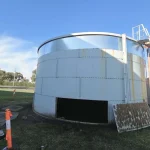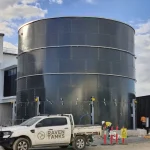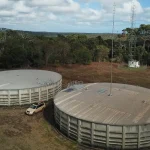Water tanks are essential for households, commercial facilities, and industrial sites. They store large volumes of water for drinking, firefighting, irrigation, and other uses. However, without proper Water Tank Maintenance Services, tanks can accumulate dirt, bacteria, algae, and even rust.
Over time, this contamination affects water quality and reduces the efficiency of the system. Regular cleaning and inspections keep your tank safe and extend its lifespan.
Common Problems in Water Tanks
During water tank inspections, technicians often discover:
- Sediment build-up at the bottom of the tank.
- Algae growth, especially in tanks exposed to sunlight.
- Rust and corrosion in steel water tanks.
- Leaks or cracks in concrete and poly water tanks.
- Bacterial contamination, which makes water unsafe for drinking.
Identifying these problems early through scheduled water tank maintenance services prevents expensive repairs and health risks.
Best Practices for Water Tank Cleaning
The frequency of water tank cleaning depends on the type of tank and its usage. For potable and rainwater tanks, experts recommend professional cleaning at least once a year.
The process typically includes:
- Draining the tank – safely removing stored water.
- Scrubbing and pressure cleaning – removing dirt, algae, and scale.
- Vacuuming sludge – ensuring no residue remains.
- Disinfection – applying approved treatments to kill bacteria.
- Inspection and repairs – checking for leaks, cracks, or corroded parts.
Professional water tank maintenance services use specialized equipment and follow Australian standards for water storage to ensure compliance and safety.
Water Tank Maintenance for Different Tank Types
- Stainless Steel Water Tanks: Durable and hygienic, stainless steel tanks require regular tank inspection and cleaning to prevent corrosion and ensure safe drinking water.
- Concrete Water Tanks: Concrete tanks are prone to cracks and leaks. Periodic maintenance includes structural checks and liner replacements to prevent water loss.
- Poly Water Tanks: Poly tanks are lightweight and resistant to rust but still need routine tank cleaning to remove sediment and algae.
- Fire Water Tanks: Fire protection tanks must always be ready in an emergency. Regular fire water tank inspections check water levels, pump connections, and compliance with AS1851 standards.
Benefits of Regular Water Tank Maintenance
- Safe drinking water – reduces bacteria, algae, and contamination.
- Cost savings – prevents costly tank repairs or replacements.
- Extended lifespan – keeps tanks in good working condition.
- Regulation compliance – meets local and national water safety standards.
- Peace of mind – ensures water is available and safe when needed.

How Often Should Water Tanks be Maintained?
- Residential tanks: every 12 months.
- Commercial and industrial tanks: every 6 months.
- Fire tanks: inspections in line with AS1851 requirements.
- Potable water tanks: regular cleaning to meet health guidelines.
The exact schedule depends on location, tank size, and usage. For example, rainwater tanks near trees may require more frequent cleaning due to leaf and debris build-up.
Conclusion
Proper water tank maintenance is not optional – it is vital for health, safety, and efficiency. Whether you own a rainwater tank, fire water tank, stainless steel tank, or poly tank, regular inspections and cleaning keep your water safe and your system reliable.
Contact us today at 1800 770 899 for expert water tank maintenance services and ensure your water storage stays clean, safe, and compliant.







